News 2/10/12
Top News
The State of New Jersey will hand out $40 million in federal Medicaid money for first-round EHR incentive payouts this week. The largest payouts for hospitals and practices were $2.96 million and $403,750, respectively.
Reader Comments
![]() From Truth Seeker: “Re: attestations. Each time I try to download the CMS attestation stats via your link, I get a 37,500 line spreadsheet that lists all of the vendors and products by state. I cannot find a column that lists the number of successful attestations (which, of course, is what I want to see)! Am I doing something wrong? Maybe this is why there are only 120 downloads.” I have downloaded the same data into Excel and then done various manipulations with groups and subtotals. If anyone has figured out an easier way to analyze the data, please share.
From Truth Seeker: “Re: attestations. Each time I try to download the CMS attestation stats via your link, I get a 37,500 line spreadsheet that lists all of the vendors and products by state. I cannot find a column that lists the number of successful attestations (which, of course, is what I want to see)! Am I doing something wrong? Maybe this is why there are only 120 downloads.” I have downloaded the same data into Excel and then done various manipulations with groups and subtotals. If anyone has figured out an easier way to analyze the data, please share.
![]() From Dr. Denominator: “Re: attestation data. The information someone sent you was inaccurate on the inpatient side. I don’t blame them since the data is very messy. The mistake most people make is attributing Epic physicians to Epic hospital numbers, because a couple of large, multi-specialty Epic clinics attested on the inpatient platform even though they are EPs. There are also some hospitals that reference multiple Meditech systems and show up on multiple rows, even though it is a single provider. And HCA needs to be folded into the Meditech numbers, because it is Meditech software after all.” And has been stated, none of this includes Medicaid attestation data either, so it’s probably dangerous to draw too many conclusions from it.
From Dr. Denominator: “Re: attestation data. The information someone sent you was inaccurate on the inpatient side. I don’t blame them since the data is very messy. The mistake most people make is attributing Epic physicians to Epic hospital numbers, because a couple of large, multi-specialty Epic clinics attested on the inpatient platform even though they are EPs. There are also some hospitals that reference multiple Meditech systems and show up on multiple rows, even though it is a single provider. And HCA needs to be folded into the Meditech numbers, because it is Meditech software after all.” And has been stated, none of this includes Medicaid attestation data either, so it’s probably dangerous to draw too many conclusions from it.
![]() From Zen: “Re: animated ads. When are you getting rid of the rest of the animated ads?” With all the HIMSS prepping over the last few weeks, I have not made the time to pester the last few sponsors that have yet to provide us with non-animated ads. I admit I love the change and look forward to the day when there is total stillness on the left side of the page.
From Zen: “Re: animated ads. When are you getting rid of the rest of the animated ads?” With all the HIMSS prepping over the last few weeks, I have not made the time to pester the last few sponsors that have yet to provide us with non-animated ads. I admit I love the change and look forward to the day when there is total stillness on the left side of the page.
![]() From HITandTiaras: “Re: judges. Who are the judges for the shoe and fashion contests at HIStalkapalooza?” For the “Inga Loves My Shoes” contest, RelayHealth’s Lindsay Miller will be returning and will be joined by Timur Tugberk from DrFirst. Our fashion judges will be Health 2.0’s Matthew Holt, the glamorous Rebecca Armato of Huntington Hospital, and last year’s red carpet lovely Jennifer Lyle of Software Testing Solutions. Matt wanted me to let contestants know that due to his poor sense of fashion, he is willing to accept all bribes.
From HITandTiaras: “Re: judges. Who are the judges for the shoe and fashion contests at HIStalkapalooza?” For the “Inga Loves My Shoes” contest, RelayHealth’s Lindsay Miller will be returning and will be joined by Timur Tugberk from DrFirst. Our fashion judges will be Health 2.0’s Matthew Holt, the glamorous Rebecca Armato of Huntington Hospital, and last year’s red carpet lovely Jennifer Lyle of Software Testing Solutions. Matt wanted me to let contestants know that due to his poor sense of fashion, he is willing to accept all bribes.
![]() From Carla Tortelli: “Re: HIStalkapalooza. I understand there will be IngaTinis. What exactly is that?” As far as I am concerned, it is any yummy martini-ish cocktail. However, the ESD folks told me that this year’s version is a mix of green tea vodka, orchard pear liqueur, elderflower blossom, fresh pear juice, and vanilla bean-infused honey. My consulting physician Dr. Jayne has advised me of the benefits of green tea and has assured me it increases calorie burning and stamina. I’ll thus be drinking a few.
From Carla Tortelli: “Re: HIStalkapalooza. I understand there will be IngaTinis. What exactly is that?” As far as I am concerned, it is any yummy martini-ish cocktail. However, the ESD folks told me that this year’s version is a mix of green tea vodka, orchard pear liqueur, elderflower blossom, fresh pear juice, and vanilla bean-infused honey. My consulting physician Dr. Jayne has advised me of the benefits of green tea and has assured me it increases calorie burning and stamina. I’ll thus be drinking a few.
![]() From Cold in Tampa: “Re: Vitera update. Police were called to the Tampa, Alachua, and Scottsdale offices to ensure the quiet exit of over 300 laid-off employees.”
From Cold in Tampa: “Re: Vitera update. Police were called to the Tampa, Alachua, and Scottsdale offices to ensure the quiet exit of over 300 laid-off employees.”
![]() From SageYouLater: “Re: Vitera layoff. I count 33 gone in my area. Boxes were dropped off and an armed police officer was on site to make sure nobody caused trouble. Some we’d have voted off the island ourselves, but some were really good. Vitera’s parent private equity company made it clear that their goals are to increase revenue 30% in three years, requiring them to make acquisitions (AKA buy growth if you can’t grow it). Freeing up cash to acquire companies is how they’ll get that growth, probably via LBOs since it’s easier and there is no profitability target in their objectives. These guys are not product people, they are finance people.”
From SageYouLater: “Re: Vitera layoff. I count 33 gone in my area. Boxes were dropped off and an armed police officer was on site to make sure nobody caused trouble. Some we’d have voted off the island ourselves, but some were really good. Vitera’s parent private equity company made it clear that their goals are to increase revenue 30% in three years, requiring them to make acquisitions (AKA buy growth if you can’t grow it). Freeing up cash to acquire companies is how they’ll get that growth, probably via LBOs since it’s easier and there is no profitability target in their objectives. These guys are not product people, they are finance people.”
![]() From NervousIT: “Re: our little hospital. News of a potential affiliation with a much larger organization broke out last week. Should I be nervous? How do these things typically go?” I’ve been through the process a couple of times from the big hospital IT side of the table, so here’s my experience in a nutshell, which may or may not be representative (OK, it might be a little bit tongue in cheek):
From NervousIT: “Re: our little hospital. News of a potential affiliation with a much larger organization broke out last week. Should I be nervous? How do these things typically go?” I’ve been through the process a couple of times from the big hospital IT side of the table, so here’s my experience in a nutshell, which may or may not be representative (OK, it might be a little bit tongue in cheek):
- The big hospital sends its mid-level managers, who make twice as much as your highest paid person, to snoop around and try unsuccessfully to hide their contempt of your comparatively simple but more effective operation.
- They say they are there to learn and assist, but in reality they are thinking, “How fast can we rip out their stuff and replace it with products that we already know and therefore are less of a pain for us to support, no matter what users prefer?”
- The systems they want to put in your hospital are more complicated, partly because big hospitals like big, complicated products, but also because big hospitals have big egos and manage to make everything 10 times harder than it needs to be because all kinds of job-paranoid mid-level IT managers are always trying to justify their existence by increasing the level of specialization and complexity wherever possible.
- Every decision is made on the basis of which option presents the least risk to the IT organization. Risk means anything that could require more employees, increase help desk calls, or put the bonuses of the top IT executives in jeopardy.
- Any semblance of being a friendly, well-respected IT operation goes down the tubes as the new suits insist that nobody can talk to anybody without a help desk ticket, IT employees aren’t allowed to solve problems or make changes without reams of documentation, and vigorously enforced PC policies ensure that everybody except executives in IT and Finance are using the same hardware and software that has been dumbed down and locked down so that the lowest level employee in dietary or facilities maintenance can’t do anything that might require a help desk call. Think of this as computer socialism.
- Endless meetings will be held in which nobody in the room has the authority to make a decision, but everybody is empowered to veto someone else’s recommendation or insist that the issue be studied further with even more people invited to the table. The chairs in conference rooms never have time to get cold before the next set of IT posteriors land on them.
- You will for the first time see ambitious, back-stabbing IT managers trying to distance themselves from their humble programmer or networking origins by wearing a suit at all times and riding herd on their tiny fiefdoms like they are Steve Jobs, except without the charm, vision, passion, and brains.
- On the other hand, you will probably get better benefits and possibly a raise, at least as long as your job isn’t too closely identified with one of the systems that will be unceremoniously dumped, in which case you may find yourself attached to it. You may not be able to look users in the eye, but your career prospects may improve because of better training, exposure to systems for which experts are needed, and a more recognizable employer name on your resume. If you are lucky, you may even get to stay on the periphery and avoid the soul-sucking part of the IT organization entirely. You’ll also realize that it’s not just IT described above – pretty much all big-hospital departments stack up to their small-hospital counterparts in exactly the same way.
HIStalk Announcements and Requests
![]() From the HIStalk Practice world this week: Epic, Allscripts, and eClinicalworks represent over half of all EP attestations to date. I share the names of a few ambulatory EMR vendors I intend to visit at HIMSS. Proposed legislation would make it easier for providers to practice telemedicine in multiple states. Questions that practices should not send to technical support. Dr. Gregg overviews CareCloud’s EMR. Hayes Management Consulting’s Rob Drewniak shares tips for preparing for data breaches. Thanks for signing up for e-mail updates while you’re checking out the news. And thanks for reading!
From the HIStalk Practice world this week: Epic, Allscripts, and eClinicalworks represent over half of all EP attestations to date. I share the names of a few ambulatory EMR vendors I intend to visit at HIMSS. Proposed legislation would make it easier for providers to practice telemedicine in multiple states. Questions that practices should not send to technical support. Dr. Gregg overviews CareCloud’s EMR. Hayes Management Consulting’s Rob Drewniak shares tips for preparing for data breaches. Thanks for signing up for e-mail updates while you’re checking out the news. And thanks for reading!
![]() Speaking of IngaTinis, Medicomp will be serving up a few when I participate in their Quipstar live game show Wednesday, February 22. The game is designed to demonstrate how quickly providers can be trained on Quippe and how easy it is to use. If you are interested in winning an iPad2 or some other nifty prize, you can register to participate. Before I agreed to play, the Medicomp folks had to meet a list of my diva demands that included IngaTinis for everyone and green M&Ms for my dressing room. I couldn’t refuse when they also agreed to make a hefty donation to my favorite charity. I’ll be playing to win.
Speaking of IngaTinis, Medicomp will be serving up a few when I participate in their Quipstar live game show Wednesday, February 22. The game is designed to demonstrate how quickly providers can be trained on Quippe and how easy it is to use. If you are interested in winning an iPad2 or some other nifty prize, you can register to participate. Before I agreed to play, the Medicomp folks had to meet a list of my diva demands that included IngaTinis for everyone and green M&Ms for my dressing room. I couldn’t refuse when they also agreed to make a hefty donation to my favorite charity. I’ll be playing to win.
![]() I have to hand it to new HIStalk Platinum Sponsor Nordic Consulting for choosing one of the most memorable names I’ve heard, especially considering that they are located in Madison, WI. Nordic is the largest Epic-only consulting firm in the US, with 100+ consultants averaging four Epic certifications each and six EHR projects under their belt. Every Nordic consultant is Epic certified and 80% of them are former Epic employees (being in Madison obviously gives them an advantage in attracting top talent.) They’re prepared to help you run validation sessions, complete your Epic builds, perform system testing, create training materials, and provide go-live support. Eighty percent of the company’s engagements last more than a year and 90% of its placements are renewed at least once. Whether you need one Epic-certified consultant or an entire implementation team, and whether it’s clinical, financial, or interface applications you need help with, Nordic Consulting can help. I appreciate their support of HIStalk.
I have to hand it to new HIStalk Platinum Sponsor Nordic Consulting for choosing one of the most memorable names I’ve heard, especially considering that they are located in Madison, WI. Nordic is the largest Epic-only consulting firm in the US, with 100+ consultants averaging four Epic certifications each and six EHR projects under their belt. Every Nordic consultant is Epic certified and 80% of them are former Epic employees (being in Madison obviously gives them an advantage in attracting top talent.) They’re prepared to help you run validation sessions, complete your Epic builds, perform system testing, create training materials, and provide go-live support. Eighty percent of the company’s engagements last more than a year and 90% of its placements are renewed at least once. Whether you need one Epic-certified consultant or an entire implementation team, and whether it’s clinical, financial, or interface applications you need help with, Nordic Consulting can help. I appreciate their support of HIStalk.
![]() Supporting HIStalk, HIStalk Practice, and HIStalk Mobile at the Platinum sponsorship level is White Plume Technologies of Birmingham, AL. Their name is memorable as well, referencing the last line in the play Cyrano de Bergerac (“and that is … my white plume”) that symbolizes courage, integrity, and honor. White Plume helps 7,800 physician customers improve their PM/EMR systems (covering “the stuff they left out,” as they say), capturing charges better and faster to the tune of an average net savings of $0.83 per encounter. The company is so confident in its low-risk solution that it will happily sign daily contract commitments, letting its value stand on its own legs. Specific modules in its ePass (Electronic Practice Acceleration Solution Suite) include AccelaCAPTURE (an intelligent superbill on a tablet PC,) AccelaMOBILE (charge capture, rounding lists, and appointments on mobile devices,) AccelaSMART (rules-based management and workflow engine,) AccelaPASS (charge passing and validation,) and AccelaSCAN (a paper superbill with quick-scan processing, up to 1,200 encounter forms per hour.) Some of the vendor systems they work with: McKesson, NextGen, GE Healthcare, athenahealth, Allscripts, Vitera, and LSS. I found a YouTube video called Waiting on the EMR of the Future that provides some background, and they have a Top 5 Things to Know and slideshow on their site. Thanks to White Plume for its support of HIStalk, HIStalk Practice, and HIStalk Mobile.
Supporting HIStalk, HIStalk Practice, and HIStalk Mobile at the Platinum sponsorship level is White Plume Technologies of Birmingham, AL. Their name is memorable as well, referencing the last line in the play Cyrano de Bergerac (“and that is … my white plume”) that symbolizes courage, integrity, and honor. White Plume helps 7,800 physician customers improve their PM/EMR systems (covering “the stuff they left out,” as they say), capturing charges better and faster to the tune of an average net savings of $0.83 per encounter. The company is so confident in its low-risk solution that it will happily sign daily contract commitments, letting its value stand on its own legs. Specific modules in its ePass (Electronic Practice Acceleration Solution Suite) include AccelaCAPTURE (an intelligent superbill on a tablet PC,) AccelaMOBILE (charge capture, rounding lists, and appointments on mobile devices,) AccelaSMART (rules-based management and workflow engine,) AccelaPASS (charge passing and validation,) and AccelaSCAN (a paper superbill with quick-scan processing, up to 1,200 encounter forms per hour.) Some of the vendor systems they work with: McKesson, NextGen, GE Healthcare, athenahealth, Allscripts, Vitera, and LSS. I found a YouTube video called Waiting on the EMR of the Future that provides some background, and they have a Top 5 Things to Know and slideshow on their site. Thanks to White Plume for its support of HIStalk, HIStalk Practice, and HIStalk Mobile.
Acquisitions, Funding, Business, and Stock
McKesson acquires peerVue, Inc., a provider of radiology workflow solutions.
Qualcomm makes a strategic investment in AirStrip Technologies via its Qualcomm Life Fund investment group.
Access signs a partnership agreement with pen tablet vendor Wacom to create a new e-Signature solution that will work with the Access Intelligent Forms Suite.
Revenue cycle management outsourcer Avadyne Health merges with revenue cycle workflow provider Benchmark Revenue Management. The combined companies will operate as Avadyne Health.
Nuance announces Q2 results: revenue up 19%, EPS 0.03 vs. $0.00, falling short of expectations after complicated acquisition costs. Shares dropped over 13% in Thursday after-hours trading.
Shares in CSC, which just announced the hiring of Misy PLC CEO Mike Lawrie as its new CEO, delays its fiscal year forecast and writes down $1.5 billion related to its disputed NPfIT contract in the UK.
Sales
The Arkansas State Health Alliance for Records Exchange selects OPTUMInsight’s Axolotl HIE for its statewide health record exchange.
WellStar Health System (GA) selects Merge Healthcare’s cardiology solution and Advanced Radiology of Columbia (MO) contracts with Merge for its radiology suite.
King’s Daughters Medical Center (KY) selects ProVation MD for its cardiology procedure documentation and coding.
People
Ken Edwards, formerly of GE and IDX, joins ZirMed as VP of operations.
Henry Schein names Gerard K. Meuchner (Eastman Kodak) VP and chief global communications officer.
Former Eclipsys CEO Andrew Eckert, now CEO of CRC Health Corp., joins Awarepoint’s board. The company also also names Carlene Anteau MS, RN (McKesson) VP of product marketing and Erica Davidson (Breg, Inc.) as VP of human resources.
Announcements and Implementations
Physicians at St. Mary-Corwin Medical (CO) begin electronic order entry in advance of the hospital’s May 8 Meditech go-live.
Government and Politics
The VA starts implementation of patient Wi-Fi systems in all of its hospitals.
Other
![]() Weird News Andy rebrands himself as Wow News Andy in apparently excitement over this story. NASA’s implantable Biocapsule can diagnose and treat astronauts on long space journeys, using carbon nanotubes to secrete therapeutic molecules created by cellular metabolism.
Weird News Andy rebrands himself as Wow News Andy in apparently excitement over this story. NASA’s implantable Biocapsule can diagnose and treat astronauts on long space journeys, using carbon nanotubes to secrete therapeutic molecules created by cellular metabolism.
![]() A pretty good Forbes article by the CEO of healthcare consumer software vendor Avado says hospital CEOs should avoid the mistakes made by their newspaper industry counterparts. He had this to say about IT:
A pretty good Forbes article by the CEO of healthcare consumer software vendor Avado says hospital CEOs should avoid the mistakes made by their newspaper industry counterparts. He had this to say about IT:
Just as newspapers were implementing multimillion dollar IT systems while nimble competitors were using low and no cost software to disrupt the local media landscape, health systems are similarly implementing complex systems to automate the complexity necessary in a multi-faceted system. Meanwhile, disruptive innovators are implementing new models at a fraction of the cost and time. For example, it’s well understood that a healthy primary care system is the key to increasing the health of a population. Imagine if a fraction of the billions being spent by mission-driven, non-profit health systems on automating complexity was redirected towards the reinvigoration of primary care. They’d further their mission and lower their costs. Of course, they’d likely see revenues drop but presumably maximizing revenues isn’t the mission of a non-profit.
Healthcare billionaire and healthcare IT dabbler/investor Patrick Soon-Shiong is reported to be interested in buying the Los Angeles Dodgers.
Sponsor Updates
- eClinicalWorks provides details of its April 28-29 user group meeting in Chicago.
- PatientKeeper announces that Ashe Memorial Hospital (NC) successfully attested for Stage 1 MU using PatientKeeper’s CPOE solution.
- EHRScope announces its appointment as the Nuance distributor for Dragon Medical Spanish, v11.
- PeaceHealth’s Sacred Heart Medical Center at RiverBend (OR) expands its use of Versus Technology’s RTLS into the labor and delivery area.
- Compuware announces a live customer Webcast featuring CHRISTUS Health SVP and CIO George Conklin.
- T-System releases a demo of its new ACO solution, T-System Performance Care Continuity.
EPtalk by Dr. Jayne
Medicomp Systems announces their Quipstar game show promotion for HIMSS12. You heard all of us gush about it last year, so be sure to experience it yourself. Those selected will have a chance to compete for cash and prizes. Topics include ICD-10, Meaningful Use, and “other industry challenges.” I wonder if they’ll include such questions as: what clothing item is Inga HIStalk obsessed with? Does Dr. Jayne prefer diamonds or pearls? What medical specialty shares Mr. H’s affinity for the forehead-mounted reflector?
Clinical decision support fans take note: an editorial in the Journal of the American Medical Association this week discusses “The Harms of Screening.” It highlights the varied (and often conflicting) recommendations that providers are faced with daily. If providers can’t agree among themselves what is the best course of action, how can we expect vendors to know what to build? The answer, in case you’re curious: build all of the various recommendations and let your clients turn off the ones they don’t want, rather than asking them to customize in the ones they do want.
Another piece in the same issue titled “Integrating Technology Into Health Care: What Will It Take?” tackles low uptake rates for electronic health records and personal health records. The authors note that “to fit into the lives of patients, technology must help patients do the jobs that they perceive as high priority in their lives.” Unfortunately “many patients perceive financial health and other concerns as more pressing jobs to be done than physical health.” Judging from the patients I’ve seen this week, those more pressing concerns include whether to get a new iPhone or just replace the case that’s losing its little crystal decorations; whether the new Kate Spade purses are really that cute; and whether or not the Super Bowl is overrated.
Early last year, the Office of the Inspector General (OIG) wanted to study why physicians opt out of Medicare. Now they’re ending the investigation, citing a lack of centralized data. Additionally, the poor quality of the data it did receive from Medicare Administrative Contractors and legacy carriers made them unable to “determine the characteristics of physicians who opt out of Medicare, the trend in the number of opted-out physicians, and why physicians choose to opt out of Medicare.” Two thoughts strike me here. First, if I gave bad data to Medicare, I’d be fined with penalties (just an idea? Maybe, maybe not). The second: have they heard of SurveyMonkey?
It’s been a while since I’ve been in the operating room, but unfortunately I’ve seen what happens when something is left in the body. Most surgical sponges have a portion of the weave that is visible on x-ray if the situation arises where one can’t be found. To help prevent lost sponges in the first place though, the University of Michigan is using barcoding technology to scan sponges when they’re used and again when they’re removed.
Only a few weeks left to get your Meaningful Use on for 2011. Have you attested yet? I’m still looking for some understanding of why some of those attestations have been unsuccessful. If you’re one of the unlucky few and are now working through the appeals process, we’d love to hear your story.
Score one for software developers working late nights. The Centers for Disease Control reveals that salty snacks such as potato chips are not the chief source of sodium in the American diet. The culprits include bread and rolls, cold cuts and cured meats, pizza, poultry, soups, sandwiches, and cheese. I didn’t see dark chocolate on there either, so I guess I’m good to go.
Have a question about Meaningful Use, the ideal percentage of cacao in chocolate, or which shoes are less cute (and thus more easily donated to Souls4Soles?) E-mail me.
Contacts
Mr. H, Inga, Dr. Jayne, Dr. Gregg.
More news: HIStalk Practice, HIStalk Mobile.


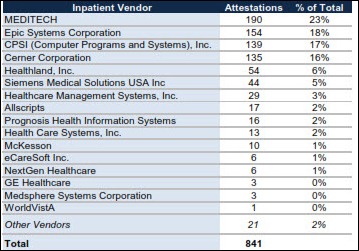
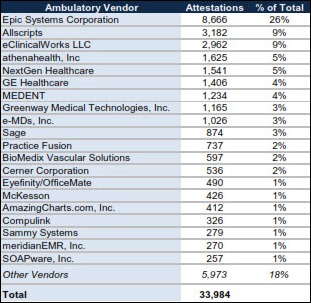








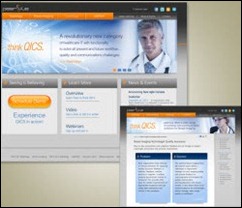








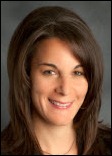

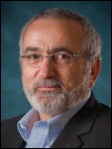


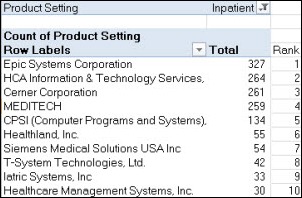

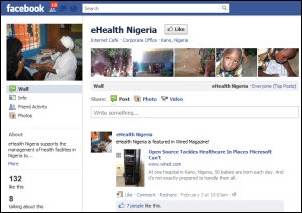



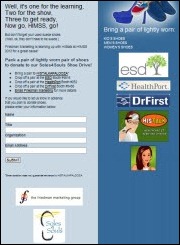





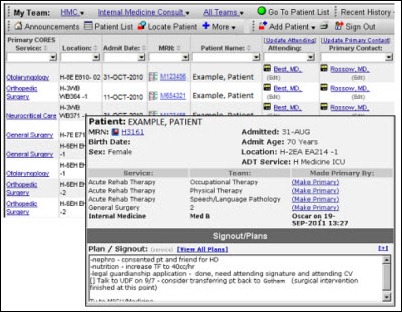



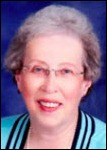
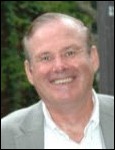
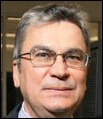




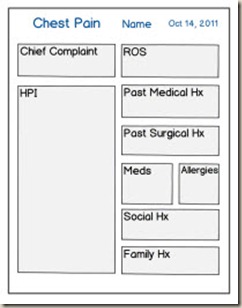


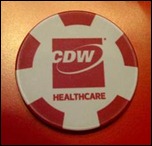



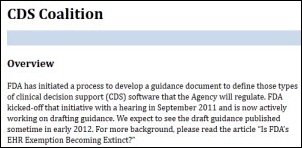


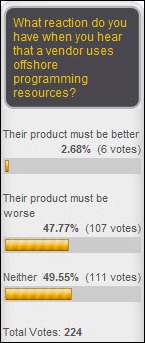














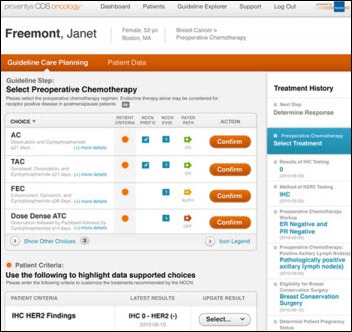

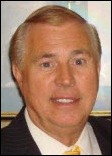

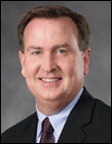
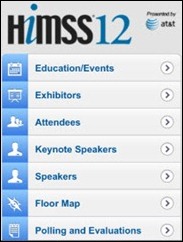


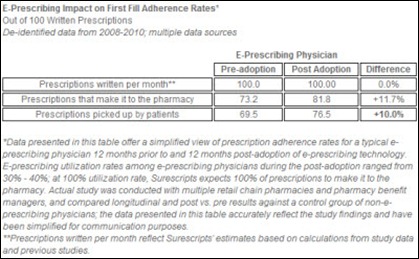
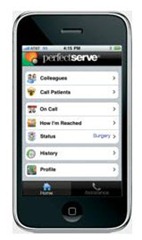


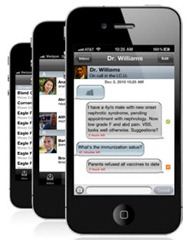


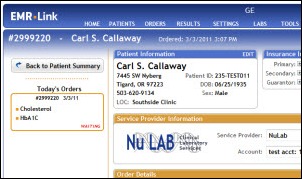



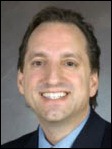
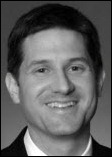

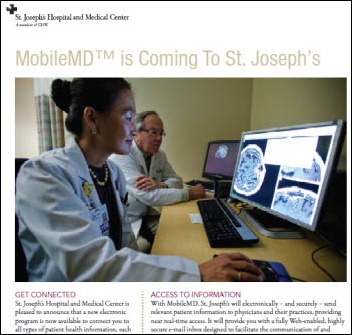
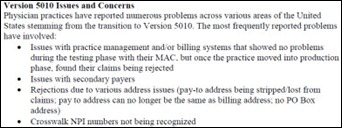
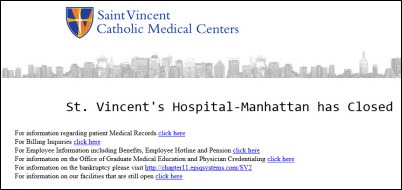
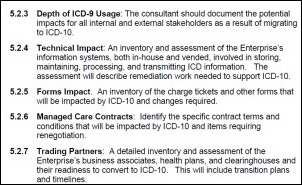
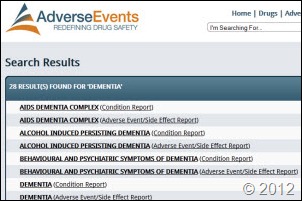
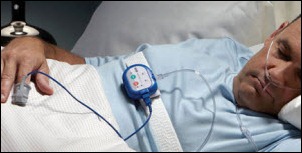








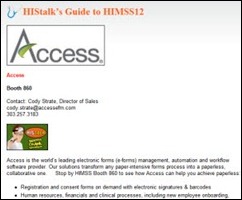







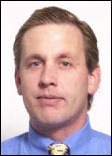

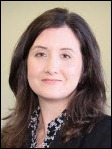
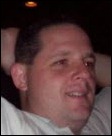

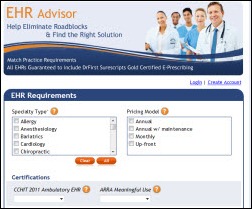
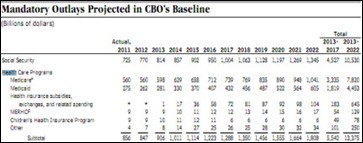
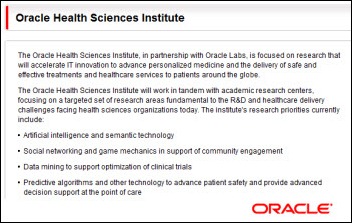






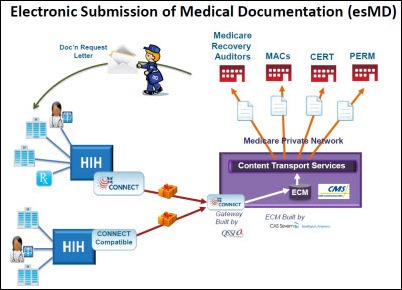
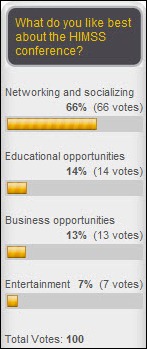
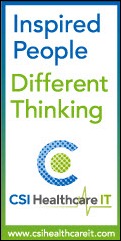

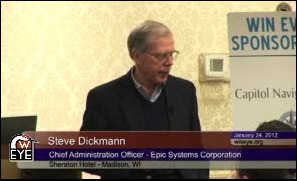
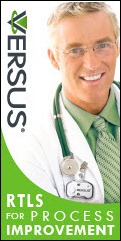
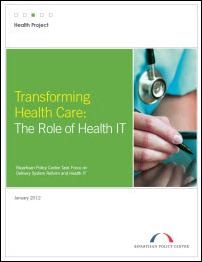
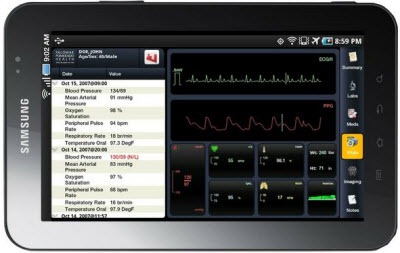

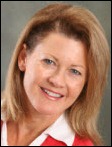

Merry Christmas and a Happy New Year to the HIStalk crowd. I wish you the joys of the season!